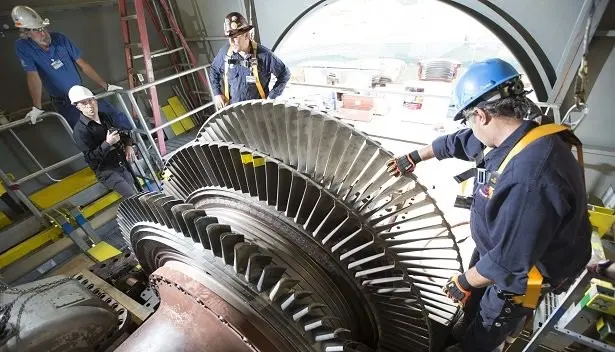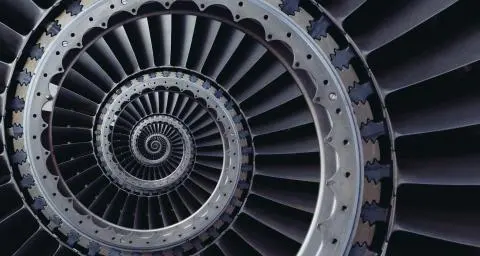Turbines are remarkable machines that have revolutionized various industries, from energy generation to aviation. In this comprehensive article, we’ll delve into the intricacies of turbines, exploring their functions, types, and applications. Buckle up as we embark on a journey to demystify “WHAT IS turbine.”
WHAT IS a Turbine?
A turbine is a mechanical device designed to convert the kinetic energy of a moving fluid or gas into mechanical energy, which can be further transformed into electrical energy or used to perform various tasks. Turbines play a crucial role in several industries, and their applications are diverse and far-reaching.
The History of Turbines
Turbines have a rich history dating back to ancient civilizations. The earliest known wind turbines were used for grinding grain in Persia around 200 BC. Since then, turbines have evolved significantly, becoming essential components in modern machinery and power generation.
Types of Turbines
There are several types of turbines, each designed for specific applications and operating conditions. Some of the most common types include:
1. Steam Turbines
Steam turbines are widely used in power generation plants. They utilize high-pressure steam to drive their blades, which are connected to generators, producing electricity.
2. Gas Turbines
Gas turbines, also known as combustion turbines, operate on the combustion of fuel and air. They are commonly found in aircraft engines and natural gas power plants.
3. Wind Turbines
Wind turbines harness the kinetic energy of the wind to generate electricity. They consist of large blades connected to a generator, often seen in wind farms.
4. Water Turbines
Water turbines are used in hydroelectric power plants and convert the energy of flowing water into mechanical energy, which is then transformed into electricity.
5. Steam Turbines
Steam turbines are widely used in power generation plants. They utilize high-pressure steam to drive their blades, which are connected to generators, producing electricity.
6. Gas Turbines
Gas turbines, also known as combustion turbines, operate on the combustion of fuel and air. They are commonly found in aircraft engines and natural gas power plants.
7. Wind Turbines
Wind turbines harness the kinetic energy of the wind to generate electricity. They consist of large blades connected to a generator, often seen in wind farms.
8. Water Turbines
Water turbines are used in hydroelectric power plants and convert the energy of flowing water into mechanical energy, which is then transformed into electricity.

How Do Turbines Work?
To understand how turbines work, let’s take a closer look at a steam turbine, one of the most widely used types:
- Steam Inlet: High-pressure steam enters the turbine through a series of nozzles.
- Rotor Blades: The steam hits the rotor blades, causing them to spin.
- Mechanical Energy: As the rotor blades turn, they transfer kinetic energy to a shaft, which can be used to generate electricity or perform other tasks.
Applications of Turbines
Turbines have a vast range of applications, including:
- Power Generation: Turbines are at the heart of power plants, where they generate electricity from various energy sources.
- Aerospace: Jet engines, which use gas turbines, power aircraft for both civilian and military purposes.
- Renewable Energy: Wind and hydroelectric turbines harness the power of nature to produce clean energy.
- Maritime: Steam turbines have been used in ships for propulsion for over a century.
- Industrial Processes: Turbines drive machinery in various industrial processes, improving efficiency.
Conclusion
In conclusion, turbines are versatile machines that have transformed industries and power generation. They harness the power of fluids and gases to create mechanical energy, driving progress and innovation. Whether you’re intrigued by the history of turbines or interested in their diverse applications, understanding “WHAT IS turbine” is a fascinating journey into the world of engineering and energy.
FAQ
How efficient are turbines?
Turbines can be highly efficient, with some designs reaching efficiencies of over 90%. However, efficiency depends on factors like design, maintenance, and operating conditions.
Are turbines environmentally friendly?
Turbines can be environmentally friendly, especially wind and hydroelectric turbines. They produce clean energy and have minimal carbon emissions.
What is the largest turbine in the world?
The largest turbine in the world is typically a wind turbine. As of 2021, the Haliade-X offshore wind turbine by General Electric is one of the largest, with a rotor diameter of 220 meters.
Can turbines be used for small-scale power generation?
Yes, smaller turbines are used for distributed power generation, often in remote areas or on individual properties.
Are gas turbines the same as jet engines?
Gas turbines are similar to jet engines in principle but are used for different purposes. Jet engines provide thrust for aircraft, while gas turbines can generate electricity or drive machinery.
How do hydroelectric turbines work?
Hydroelectric turbines utilize the kinetic energy of flowing water to generate electricity. Water is directed onto the turbine blades, causing them to spin and generate power.
